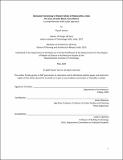| dc.contributor.advisor | James Wescoat. | en_US |
| dc.contributor.author | Verma, Piyush,S. M.Massachusetts Institute of Technology. | en_US |
| dc.contributor.other | Massachusetts Institute of Technology. Department of Architecture. | en_US |
| dc.coverage.spatial | a-ii--- | en_US |
| dc.date.accessioned | 2020-09-15T22:03:34Z | |
| dc.date.available | 2020-09-15T22:03:34Z | |
| dc.date.copyright | 2020 | en_US |
| dc.date.issued | 2020 | en_US |
| dc.identifier.uri | https://hdl.handle.net/1721.1/127557 | |
| dc.description | Thesis: S.M., Massachusetts Institute of Technology, Department of Architecture, May, 2020 | en_US |
| dc.description | Cataloged from the official PDF of thesis. | en_US |
| dc.description | Includes bibliographical references (pages 81-83). | en_US |
| dc.description.abstract | Pune district lies in the Deccan Plateau and is a part of the Western Ghats of India. Some parts of Pune district receive a high amount of rainfall (more than 1000mm) at a high intensity for three months of the year, but face water scarcity during a major part of the year. Due to high runoff and limited ground water infiltration, it has been challenging to utilize the heavy rainfall that is available. One of the hilly blocks in Pune named Velhe is such an example. From 2003 to 2012 Velhe received 2667.7 mm average annual rainfall, more than twice the average annual rainfall of Pune district during the same period. Velhe block has dense Deccan Trap basalt geology, which has low ground water development potential. In addition to its groundwater conditions, the high steep slopes of Velhe make it difficult to supply water through tankers. This is another reason why the region has a lack of water, particularly in the summer season. The project proposes design and planning interventions to solve the seasonal water scarcity problem in a village called Metpilaware in Velhe block, Pune District, Maharashtra, India. It builds upon the existing work done by governmental and non-governmental organizations. It provides solutions at the village scale through a comprehensive analysis at the block scale with the help of three different approaches (scientific, on-ground participatory community planning, and theoretical framework). At the block scale, Gram Sevaks (Village officers) collected water service data that led to the selection of a case study village, and we conducted precipitation data analysis to identify key rainwater harvesting design criteria. At the village scale, we test village preferences for different combinations of integrated rainwater harvesting solutions in an integrated framework watershed, stream channel, and household structures. | en_US |
| dc.description.statementofresponsibility | by Piyush Verma. | en_US |
| dc.format.extent | 83 pages | en_US |
| dc.language.iso | eng | en_US |
| dc.publisher | Massachusetts Institute of Technology | en_US |
| dc.rights | MIT theses may be protected by copyright. Please reuse MIT thesis content according to the MIT Libraries Permissions Policy, which is available through the URL provided. | en_US |
| dc.rights.uri | http://dspace.mit.edu/handle/1721.1/7582 | en_US |
| dc.subject | Architecture. | en_US |
| dc.title | Rainwater harvesting in western Ghats of Maharashtra, India : the case of Velhe Block, Pune District : a comprehensive multi-scalar approach | en_US |
| dc.type | Thesis | en_US |
| dc.description.degree | S.M. | en_US |
| dc.contributor.department | Massachusetts Institute of Technology. Department of Architecture | en_US |
| dc.identifier.oclc | 1193319821 | en_US |
| dc.description.collection | S.M. Massachusetts Institute of Technology, Department of Architecture | en_US |
| dspace.imported | 2020-09-15T22:03:34Z | en_US |
| mit.thesis.degree | Master | en_US |
| mit.thesis.department | Arch | en_US |
